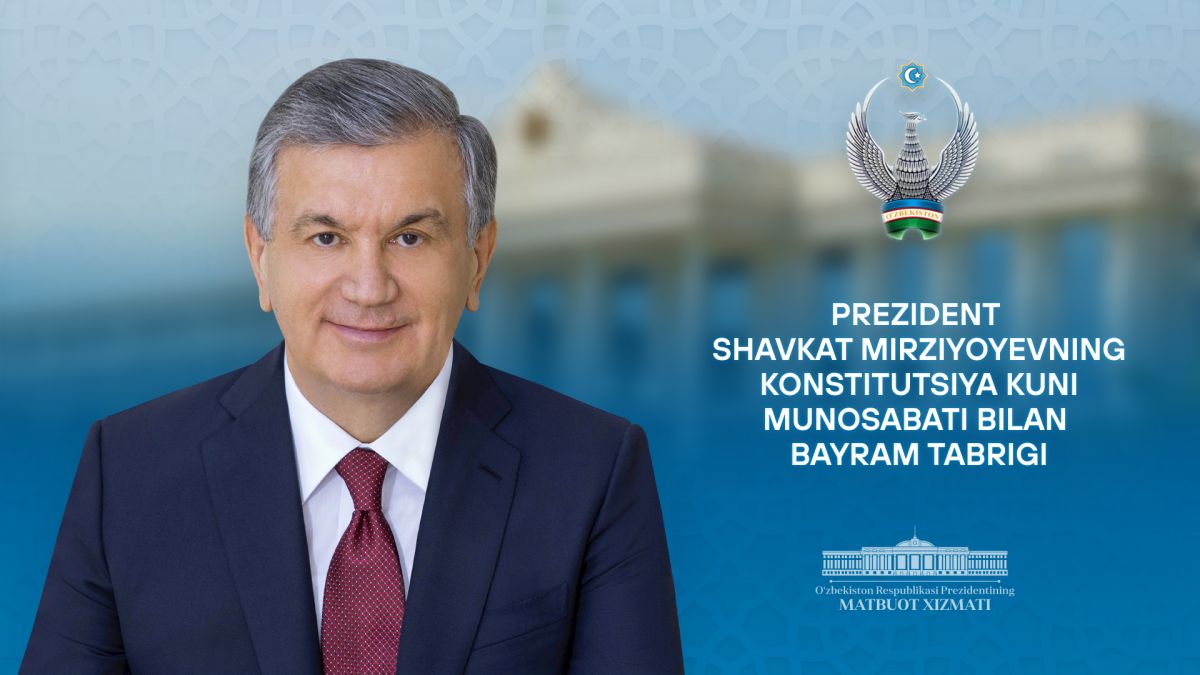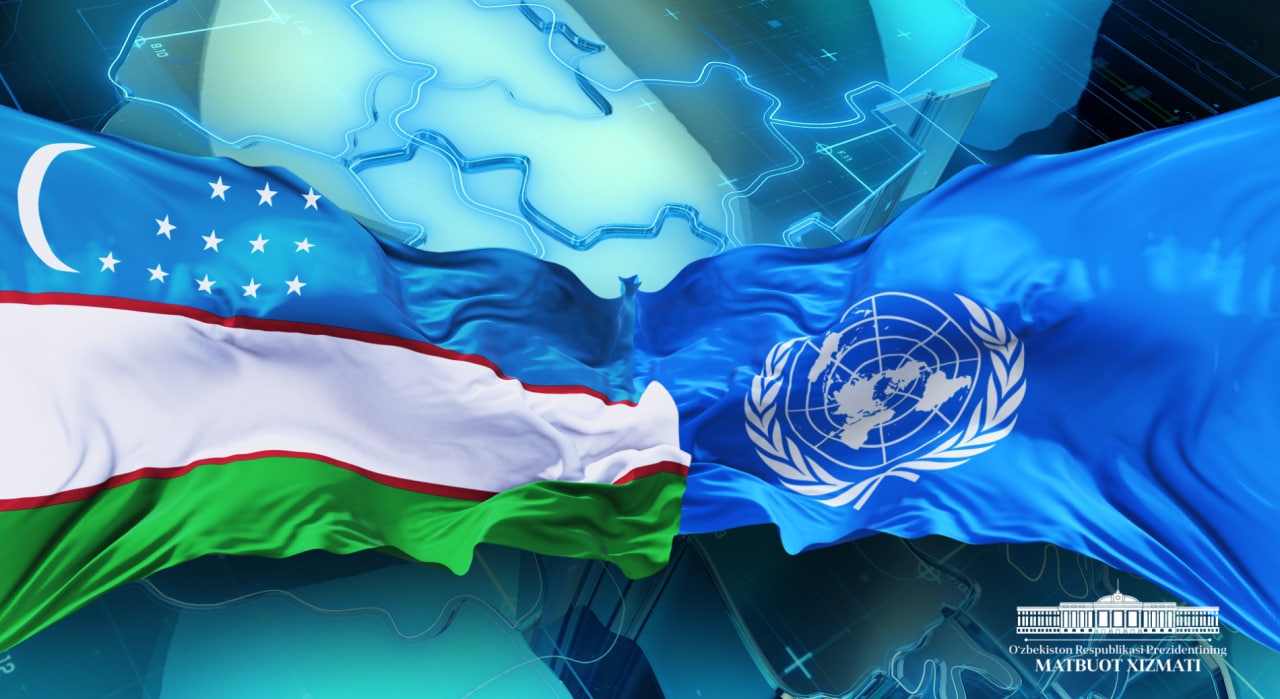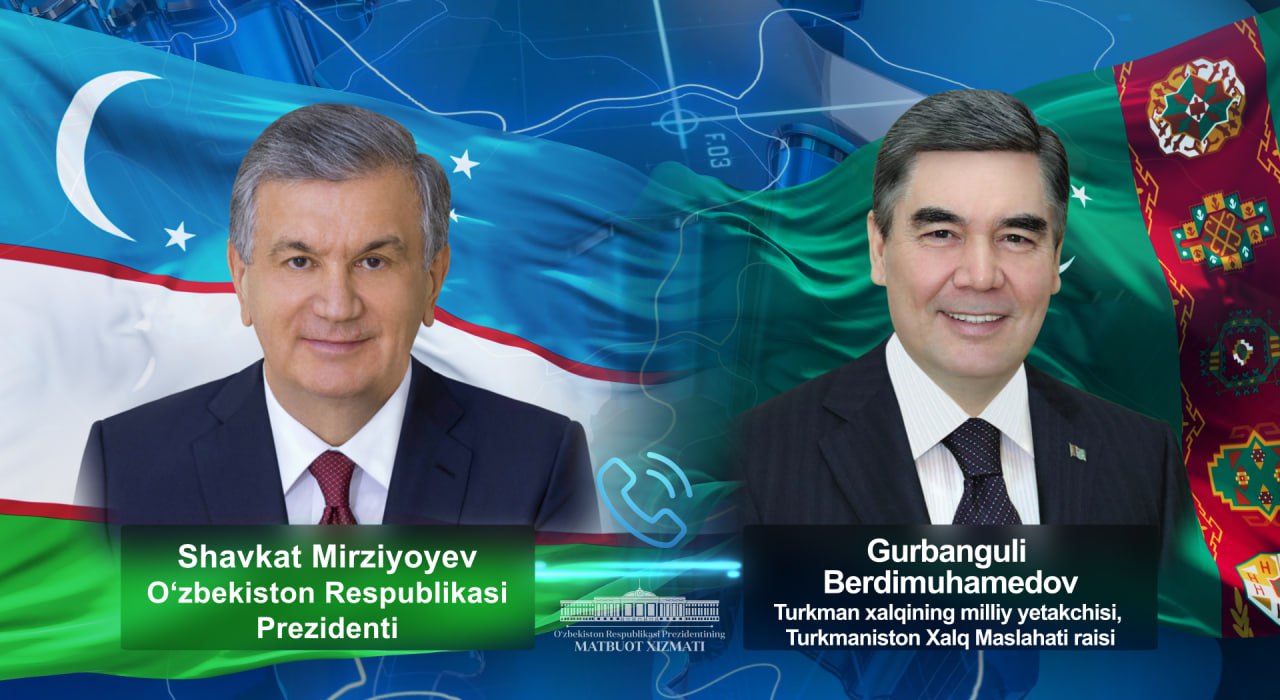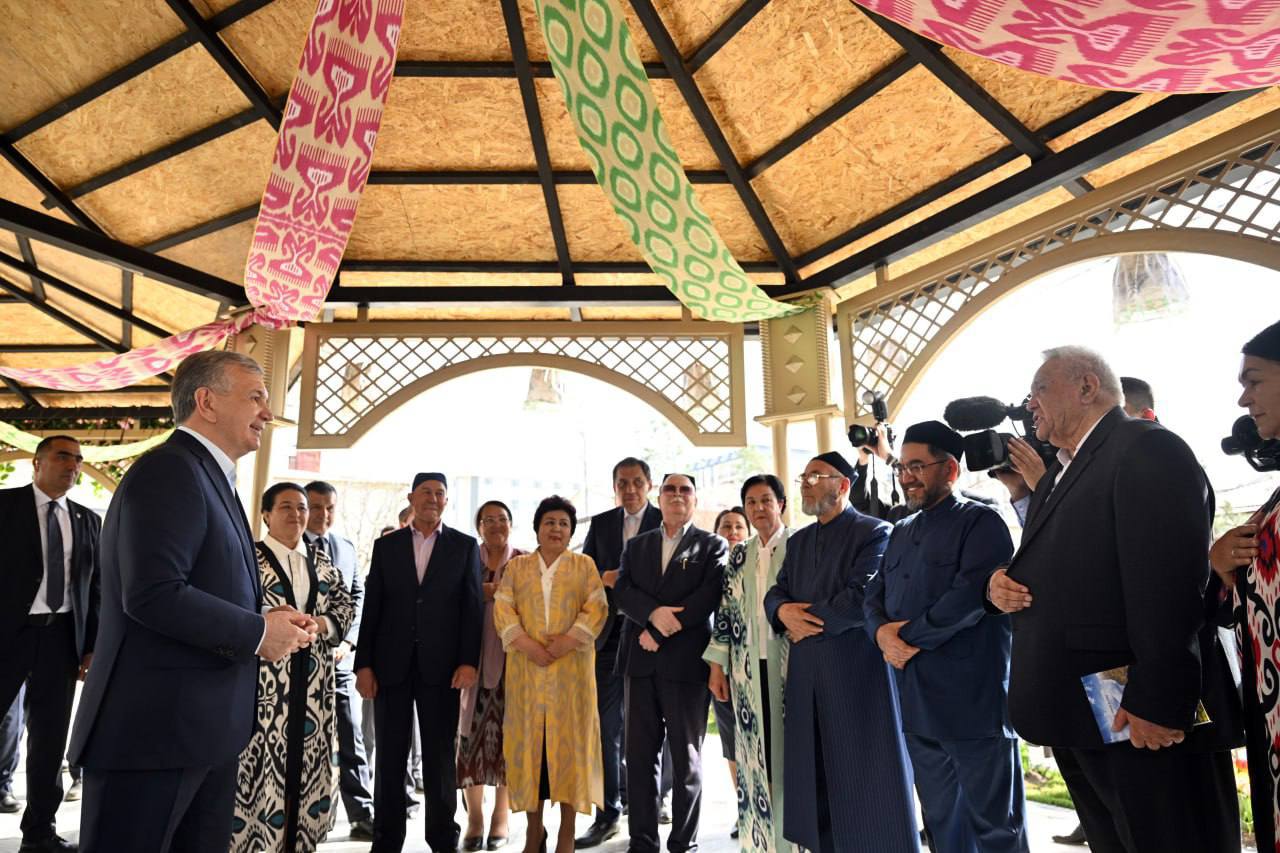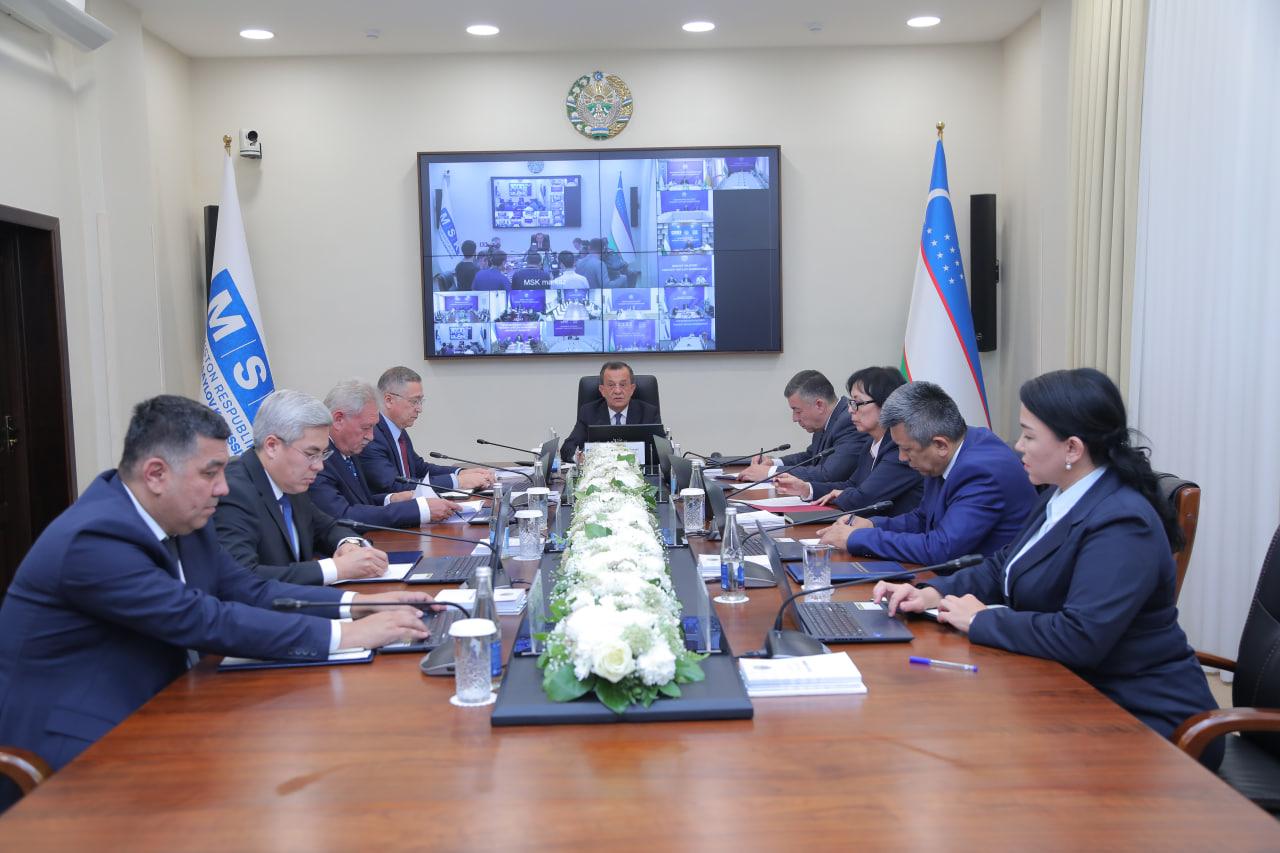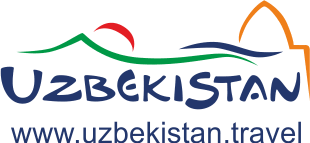Phone
Consular Issues
Phone
Uzbekistan news
We recommend
Writers’ Union of Uzbekistan
📅 03.06.2025
Academy of Sciences of the Republic of Uzbekistan
Festive greetings to the people of Uzbekistan
📅 08.12.2024
Dear compatriots!
I cordially congratulate you, all our multinational people with the Constitution Day of the Republic of Uzbekistan celebrated on December 8.
Undoubtedly, this year we all feel the significance of this holiday especially deeply. After all, above all, it takes place in the context of historic transformations in the political-legal, socio-economic and spiritual spheres of our life.
It should be emphasized once again that the elections to the Oliy Majlis and local Kengashes, held in the spirit of open and competitive contest on October 27 this year, became an important step towards the implementation of our updated Fundamental Law. As a result of the elections, which vividly demonstrated the high political culture, unity and cohesion of our hardworking and tolerant people on the path of building the New Uzbekistan, a new system of representative power has been formed in the country. Its constitutional rights and powers have been strengthened and its responsibility has increased manifold.
One more important aspect: we have moved from the practice of the recent past, when khokims were simultaneously in charge of local councils, to a new system in which, for the first time, councils are headed by chairmen elected among deputies.
The transfer of more than 30 powers of khokims to local councils testifies to an even broader establishment of the principles of democracy in our society.
In accordance with the constitutional provision that the people are the only source of state power, we will resolutely continue our reforms aimed at expanding the powers of the Parliament and local Kengashes, further increasing their activity, creating the necessary conditions for effective activity, in short, turning them into the true voice of the people.
Dear friends!
Large-scale measures are taken in the country for consistent implementation of the priority principles of ensuring human rights, interests and dignity enshrined in the Fundamental Law.
Thanks to the selfless labor of our people, in recent years the national economy has doubled, the per capita income has reached 3 thousand dollars, the poverty rate has decreased from 23 to 11 percent, the coverage of preschool education has exceeded 74 percent, higher education - 39 percent, and this is undoubtedly a historic result.
In order to dynamically continue the reforms, to apply in practice the norms of the Constitution in the new edition, the issues of entrepreneurship development and, on this basis, increasing the population's income, strengthening the atmosphere of mutual respect and harmony in families and mahallas, and comprehensive support for representatives of the older generation, women and youth will continue to be at the center of our attention.
The Fundamental Law stipulates that Uzbekistan is a social state, therefore, further improvement of cities and villages, construction of new residential buildings, health care, education, culture, art and sports institutions, modernization of road and communication networks, strengthening of targeted social protection will be of paramount importance for us. In particular, the priority task is to increase twofold the amount of funds allocated to the health sector, transition to a health insurance system and provide the population with fully guaranteed medical services.
Within the framework of programs in the field of education, we will bring the coverage of higher education to 50 percent in the coming years. In 2025 alone, 4 trillion soums will be allocated from the state budget for the repair of existing kindergartens and construction of new kindergartens and schools.
Another important area is support for those in need of social protection, for which it is planned to allocate a total of 46.5 trillion soums and lift 1 million citizens out of poverty.
We will also raise to a new level the work on creating even more favorable conditions for persons with disabilities, their socialization, and in general on ensuring inclusiveness in society. Necessary measures will also be taken to reform the pension system.
As you know, the new version of the Fundamental Law for the first time enshrines the rights of citizens in the sphere of ecology, emphasizing the state's obligations to protect the environment and maintain the ecological balance.
We have declared 2025 the Year of Environmental Protection and Green Economy in the country and have set clear objectives in this field. I am confident that this will serve as an important basis for implementing the relevant constitutional norms and principles.
I take this opportunity to urge you, dear compatriots, all our people to take an active part in the development and implementation of the State Program of the coming year.
We have no right to forget that the protection of nature is the protection of the humans, our future. We must protect our priceless wealth - fertile fields, clean springs, rivers and lakes, mountains and plains, create new gardens and parks, green territories, so that our motherland Uzbekistan becomes even more beautiful, and future generations live in a free and prosperous country.
Dear compatriots!
Our Constitution has always been and remains a reliable guarantor of strengthening national independence, preserving peace and stability in the country, interethnic friendship and harmony, ensuring the irreversibility of the ongoing reforms.
We are proud of our Fundamental Law - a vivid symbol and practical embodiment of the legal consciousness and will of the people. I believe that studying every article, every norm of this unique legal document, showing respect for them should become a sacred duty and a life principle for all of us.
I am convinced that by working in good faith, recognizing our responsibility, we will be able to further increase the effectiveness of the reforms carried out and will definitely achieve the great goals before us.
Once again I sincerely congratulate you, dear compatriots, with Constitution Day, wish you all health, peace and prosperity to your families.
May the authority and glory of our Motherland grow!
May the people of Uzbekistan - the creator of all our achievements - be happy!
Shavkat Mirziyoyev,
President of the Republic of Uzbekistan
President of Uzbekistan discusses with the head of the European Council the issues of further expansion of multifaceted cooperation
📅 27.01.2025
During a telephone conversation between President of the Republic of Uzbekistan Shavkat Mirziyoyev and President of the European Council António Costa on January 23, topical issues on the bilateral and regional agenda were discussed.
The President of Uzbekistan sincerely congratulated António Costa on his election as the head of the European Council and wished him great success.
It was noted with deep satisfaction that the Uzbek-European multifaceted cooperation has reached the highest level in recent years and continues to develop dynamically in all priority dimensions.
Active contacts and exchanges at different levels have been carried out. In 2024, Uzbekistan's trade turnover with the EU countries exceeded 6 billion euros, the portfolio of projects with European companies reached 30 billion euros.
Last year, an agreement on strategic partnership in the field of critical mineral resources was signed. There is fruitful cooperation in transportation and digital interconnectivity, green economy, culture and other areas.
Confidence was expressed in the early signing of the Enhanced Partnership and Cooperation Agreement between the Republic of Uzbekistan and the European Union, which will give a serious impetus to the development of the entire range of relations.
The Uzbek leader and the head of the European Council also exchanged views on the international agenda and regional cooperation. Joint plans to prepare and hold the first “Central Asia-EU” summit in the city of Samarkand in April this year were discussed.
UN Secretary-General to visit Uzbekistan
📅 30.06.2024
At the invitation of President of the Republic of Uzbekistan Shavkat Mirziyoyev, United Nations Secretary-General António Guterres will pay an official visit to our country from June 30 to July 1.
The program of the high-ranking guest's stay in Tashkent envisages talks at the highest level.
The agenda includes issues of further expansion and strengthening of Uzbekistan's multifaceted cooperation with the UN and its institutions, as well as topical aspects of global policy and regional interaction. Special attention will be paid to supporting measures to achieve the Sustainable Development Goals in our country.
During the visit, the UN Secretary-General will also visit a number of industrial and social sites, hold bilateral meetings and events.
Translated with DeepL.com (free version)
On May 28-29, the Prime Minister of Italy will pay an official visit to Uzbekistan
📅 27.05.2025
The national leader of the Turkmen people congratulated the President of Uzbekistan
📅 24.07.2024The text of the article is in Uzbek language!
The President of Uzbekistan noted the priorities of expanding partnership with the World Bank
📅 08.10.2024
President of the Republic of Uzbekistan Shavkat Mirziyoyev met with World Bank Vice President for Europe and Central Asia Antonella Bassani on September 30.
The sides discussed topical issues of further expansion of strategic cooperation with the World Bank Group and support of this leading international financial institution to the ongoing reform program in New Uzbekistan.
At the beginning of the meeting, Vice President Antonella Bassani conveyed to the head of our state sincere greetings and best wishes of World Bank President Ajay Bangui.
During the conversation, the current high level and fruitful nature of bilateral cooperation were noted with deep satisfaction.
In recent years, our country has become one of the largest partners of the Bank - the portfolio of projects has increased several times and now exceeds 12 billion dollars.
The World Bank is supporting the implementation of important reforms aimed at ensuring the sustainability of economic and social sectors. The Bank's regional office in Tashkent has been operating since July this year.
Such areas as poverty reduction, transformation of state-owned enterprises and banks, decarbonization, support for WTO accession and others have been identified as priorities for further expansion of the partnership.
Special attention was paid to the programs of urbanization and integrated development of regions, modernization of energy and irrigation infrastructure, support to the private sector.
There was also an exchange of views on the promotion of regional projects.
ACADEMY OF ARTS OF UZBEKISTAN. OPEN CALL
📅 08.07.2024
OPEN CALL
The Academy of Arts of Uzbekistan invites you to participate
at the X Tashkent International Biennale
of Contemporary Art,
which will be held from 14 to 18 October 2024 in the city of Tashkent (Uzbekistan). Can take part in the Biennale artists of various areas of contemporary art and present your work on the topic
“Art and World”.
In addition to the main exhibition, the biennale will host a number of artistic and cultural events, such as exhibitions, lectures and master classes, an international conference, and a tour of the cities of Uzbekistan.
All expenses of foreign participants for their stay (meals, internal transportation, accommodation) in Tashkent, except for flights,
will be covered by the Organizing Committee.
Applications for participation in the Biennale are accepted until August 15, 2024 via Google form:
https://forms.gle/aUEMyfrsyQUsrp7b7
(detailed information is given in the attachment to this letter)
*Organizers have the right to make changes to the event program
*Application requirements
X International Biennale of Contemporary Art
(Tashkent, Uzbekistan, October 14-18, 2024)
|
Age: |
No limits |
|
Country of residence: |
No limits |
|
Field of Art: |
All fields of art, Fine and Contemporary Arts |
|
Financial Conditions: |
All expenses of foreign participants for their stay (meals, internal transportation, accommodation) in Tashkent, except for flights, will be covered by the Organizing Committee. |
|
Application order: |
Applications for participation in the Biennale are accepted only via Google form: |
Requirements for Art Works
|
Executor: |
For participation, ArtWork could have one or more authors |
|
Material: |
No limits |
|
Selection critiries: |
The works made during the last 2 years should be submitted to the competition. In terms of theme and content, they should correspond to the thematic focus of this Biennale, be executed at a high professional level, be conceptual, and carry innovative processes of contemporary art. |
|
The procedure for providing information about creative work to the Organizing Committee: |
1) Detailed information of the Art Work will be provided to the Organizing Committee by filling appropriate graph in the online Google form; 2) All Author’s Art Works should be collected in one PowerPoint presentation file (electronic format). The presentation must include only names and photos of the work. 3) Author’s ArtWorks should be provided from four angles; 4) Photo criteries: -Format: JPEG (JPG) or PDF -Minimum resolution: 2048 × 1080 pixels -Maximum size: 2 MB 5) Received works will be checked by the Organizing Committee, and selected Art Works for Biennale would be provided to the authors. |
|
Delivery method to the venue of Biennale : |
1) Applicants from Uzbekistan: transportation of the Art Work to the venue of Biennale and back to destination carried out by the participant itself ; 2) Applicants from other countries: transportation of the Art Work to the venue of Biennale and back to destination must be carried as participants baggage (cost of the baggage should be included to the amount of the ticket) |
|
Requirements for the weight of the work(s), already packed (for foreign participants): |
up to 15 kg |
|
Requirements for the size of packed work (for foreign participants): |
up to 1 cu.m.
*The cost of baggage is no compensated by the Organizing Committee of Biennale |
|
Additional conditions: |
1) Participant is responsible for the quality of packed work and safety of the Art Work before unpacking at the destination in Uzbekistan; 2) Organizers are responsible for safety of the work for the period of Biennale; 3) Organizers are responsible for the quality of packed work and safety of the Art Work after unpacking at the destination after shipping it back to the country of destination. 4) Art works could be sold on a commercial basis after performing in the Biennale, regarding the agreement of each side. |
*The organizers have the right to make amendments
The President participates in a festive celebration in a mahalla
📅 23.03.2025
Navruz is greeted with special enthusiasm throughout the country. On March 20, President Shavkat Mirziyoyev visited Rohat mahalla in Bektemir district, where he took part in festive events.
The mahalla, specializing in services and trade, is home to 4,000 people. Under the new employment system, the mahalla's internal reserves are actively used with the participation of banks. Last year, about 100 residents got jobs, 256 people became self-employed, and 13 people started entrepreneurial activities. Two manufacturing enterprises and dozens of trade and consumer service outlets create convenience for residents.
The Head of State reviewed the activities of these enterprises.
The mahalla has landscaped streets, well-maintained houses, educational and medical institutions, sports grounds, training centers, an amphitheater, crafts and library and information centers. The center for the elderly is especially lively now.
The President took part in the Sumalak celebration and had a warm talk with residents of the mahalla and representatives of the older generation. During the conversation, plans for the current year were discussed, including ensuring peace and stability, supporting entrepreneurship and creating new jobs.
– I am glad to see your mahalla so well-maintained and people in a good mood. Over time, we will expand opportunities in all districts. The most important thing is to maintain peace and unity. Remember what the situation was on our borders before? We solve all issues in a balanced manner, with political will. Thanks to the organization of work on the ground, we see the real picture in 10 thousand mahallas. Through the "mahalla seven" system, assistance reaches every home. We still have a lot of work to do in terms of increasing the population's income, reducing poverty and youth policy. This is why we are paying more attention to education, especially to the education of girls. A society where young people are educated and spiritually developed will definitely achieve prosperity, - emphasized Shavkat Mirziyoyev.
In the Rohat mahalla, young residents receive a quality education in a comprehensive school, a children's music and art school, the “Barkamol Avlod” center and an academic lyceum. The construction of a new preschool institution was recently completed, which will open up new opportunities for the early development of children.
Uzbekistan has set a goal to increase the level of youth enrollment in higher education to 50%
📅 25.07.2024
Numerous scholars and studies have confirmed the connection between the quality of education and the well-being of society. The Nobel Prize winning Gary Becker was one of the first to inquire into the impact of education on economic growth and social development. His research has shown that investing in education can improve productivity and thus economic growth.
According to experts from the Organization for Economic Cooperation and Development, the high level of education, GDP and economic development serve to augment the average life expectancy and improve public health. One should note that stepping up the duration of education by 1 year can increase GDP by 3-6 percent.
Education is considered a crucial issue for Uzbekistan, 60% of the population of whose is young people under the age of 30, with a population increase of 700 thousand a year.
Up until recently, obtaining higher education was the dream of millions of Uzbek youth. In 2016, enrollment in higher education was only 9 percent of all the school graduates, and the number of higher education institutions was 69 (with 9 private). Due to a lack of student loans to finance higher education and support systems for vulnerable segments of the population, many were unable to study failing to pay tuition fees.
There were also problems for youth in getting onboard the higher education. Those willing to obtain one were able to apply only to one institution a year. And if they did not score enough in the admission exams, they had to wait until the next year to reapply to that or another university.
In addition, such factors as taking faculty and students to forced seasonal agricultural work used to have a grave negative impact on the quality of education. So did the insufficient material incentives for the teaching staff due to the extremely low wages.
After the election of Shavkat Mirziyoyev as President of the country in 2016, the system of admission to higher education institutions started to be revised, with overall systemic transformation underway, especially when it came to the quality of education.
First, the organizational and legal framework of the industry has been revised. In particular, the 2030 Concept for Higher Education Development in the Republic of Uzbekistan was approved in 2019 by the corresponding presidential decree.
In 2020, the Oliy Majlis (Supreme Assembly, the national parliament) passed the Education law in a new edition. In accordance with it, the system opened up to market mechanisms, priority was afforded to raising the scale and quality of education to a new level, to studying advanced foreign practices and establishing broad international connections.
Apart from that, adopted in 2023, the new edition of the Constitution introduced a number of new norms on the protection of the honor and dignity of teachers, government concern for their social and material well-being. The upgraded Basic Law also granted the higher education institutions the right to academic self-government, freedom in scientific research and teaching methodologies and approaches.
Second, to be sure, education advancement requires allocation of large sums from the state budget to this area. According to research, a 1% increase in education spending will increase GDP by 0.35%. It is for this reason that the amount of funds allocated from the public budget for the maintenance and development of educational institutions in Uzbekistan has been steadily growing.
In 2023, spending on education accounted for 44 percent of total social expenditures, reaching 61.2 trillion soums.
The rapid growth in the number of public and private universities, as well as branches of foreign ones, and the introduction of market mechanisms in this area have created the basis for expanding the market in educational services. Today there are 210 universities in the country, almost half of them are private (67) and foreign universities (29).
Crucially, the youth are now free to choose. A healthy competitive environment has begun to emerge among the institutions offering higher education. Branches of prestigious foreign universities like Westminster (UK), Webster (US), Management Development Institute of Singapore, Polytechnic University of Turin (Italy) have an important role to play in the implementation of advanced standards in higher education by inviting state-of-the-art certified faculty, making a good use of the latest teaching technologies, innovations and international best practices.
As a result of the enhancement of the higher education market in Uzbekistan, it became possible to boost the coverage in the system from 9 percent of school graduates enrolled in 2016 to 42 percent in 2023. And the launch of correspondence and evening studies at universities has contributed to a sharp increase in the proportion of students over 24 years of age. The total number of university students now exceeds 1.3 million.
Starting from 2019, applicants have been given the opportunity to simultaneously submit documents to several universities and choose an educational institution based on the results of entrance exams and their preferences. This year, building on a relevant presidential decree, exams for admission to universities will take place under the principle “test first, then choose”.
Uzbekistan has created a unique system that provides opportunities to obtain higher education for people in need of social protection and people with disabilities. In particular, the distribution of admission quotas was approved on the basis of an additional two percent state scholarship for persons with disabilities and one percent for graduates of Mehribonlik (Mercy homes, orphanages), children’s villages and family homes in the context of higher educational institutions and forms of education.
It will not be an exaggeration to say that changing society by attracting girls to higher education is a unique path for Uzbekistan. Here one can recall a popular wisdom that if you educate a girl, you educate the whole nation. In order to ensure gender equality, as well as the consistent implementation of the UN Sustainable Development Goals, starting from the 2022-2023 academic year, new educational loans are allocated on preferential terms (interest-free) for training girls and women. As a result, in 2023, interest-free educational loans in the amount of 1,548.6 billion soums were allocated to about 137.4 thousand students.
A procedure has also been established for reimbursement of tuition fees for girls studying for graduate degree at universities. During this time, 20,260 women took a good advantage of this opportunity.
Special emphasis is placed on the issues of training youth from Uzbekistan in prestigious foreign universities. In particular, the amount of funds allocated from the state budget to the El-Yurt Umidi (Hope of the Nation) Foundation for the training of talented youth abroad has been growing. If 200 billion soums were allocated to this fund in 2022, in 2024 the amount reached 500 billion soums. Thanks to the foundation, more than 1,000 young people have received education in respected higher education institutions abroad and today work in various fields. According to the UNESCO Institute for Statistics, students from Uzbekistan ranked fifth in the world in the number of students studying abroad in 2021. The number exceeded 110 thousand. This is also clear evidence of how young people in this country are thirsty for knowledge.
The Uzbekistan-2030 Strategy urges to bringing the level of youth enrollment in higher education to no less than 50 percent, including in at least 10 higher educational institutions in the top 1,000 ranking of the most prestigious universities, and making the way for the country into the top 50 nations by 2030 in the Global Innovation Index.
As a result of reforms over the past period, two universities of Uzbekistan for the first time entered the top 1,000 higher education institutions in the world, compiled by the British company Quacquarelli Symonds (QS). The National Research University “Tashkent Institute of Irrigation and Agricultural Mechanization Engineers” (TIIAME) was named 547th in the rating, while the Mirzo Ulugbek National University of Uzbekistan secured the 781-790th positions.
The National Research University TIIAME was among the 300 best higher education institutions in the world and among the top three universities in Central Asia in terms of “Academic reputation”, and the National University of Uzbekistan was in the top 200 in terms of “Share of foreign teachers” and took second place among universities in the region.
In addition, 53 higher educational institutions of Uzbekistan were noted in the “THE Impact Rankings” published by the Times Higher Education agency for 2024. Seven of them ended up in the top 1,000. In the ranking, the Tashkent State University of Uzbek Language and Literature came 10th in the world in terms of gender equality.
In short, well aware of the truism that investing into education means investing into your future.
Nodir Tilavoldiev,
Member of the Legislative Chamber of the Oliy Majlis
Republic of Uzbekistan
Representatives of foreign organizations were accredited to observe the elections
📅 25.09.2024
On 23 September this year, a regular meeting of the Central Election Commission was held to discuss the accreditation of observers from abroad and from international organizations, as well as the organization of the activities of the Instant Information Center.
The interest of foreign countries and international organizations in the elections to the representative bodies of state power, which will be held this year in accordance with the updated electoral legislation, is extremely high.
In particular, it is expected that more than 1,000 international and foreign observers will participate in observing the elections, particularly about 400 from 50 countries, about 500 from 21 international organizations such as the Commonwealth of Independent States, the Office for Democratic Institutions and Human Rights of the Organization for Security and Cooperation in Europe, the Shanghai Cooperation Organization, the Organization of Turkic States and another 60 from the election commissions of 26 foreign countries.
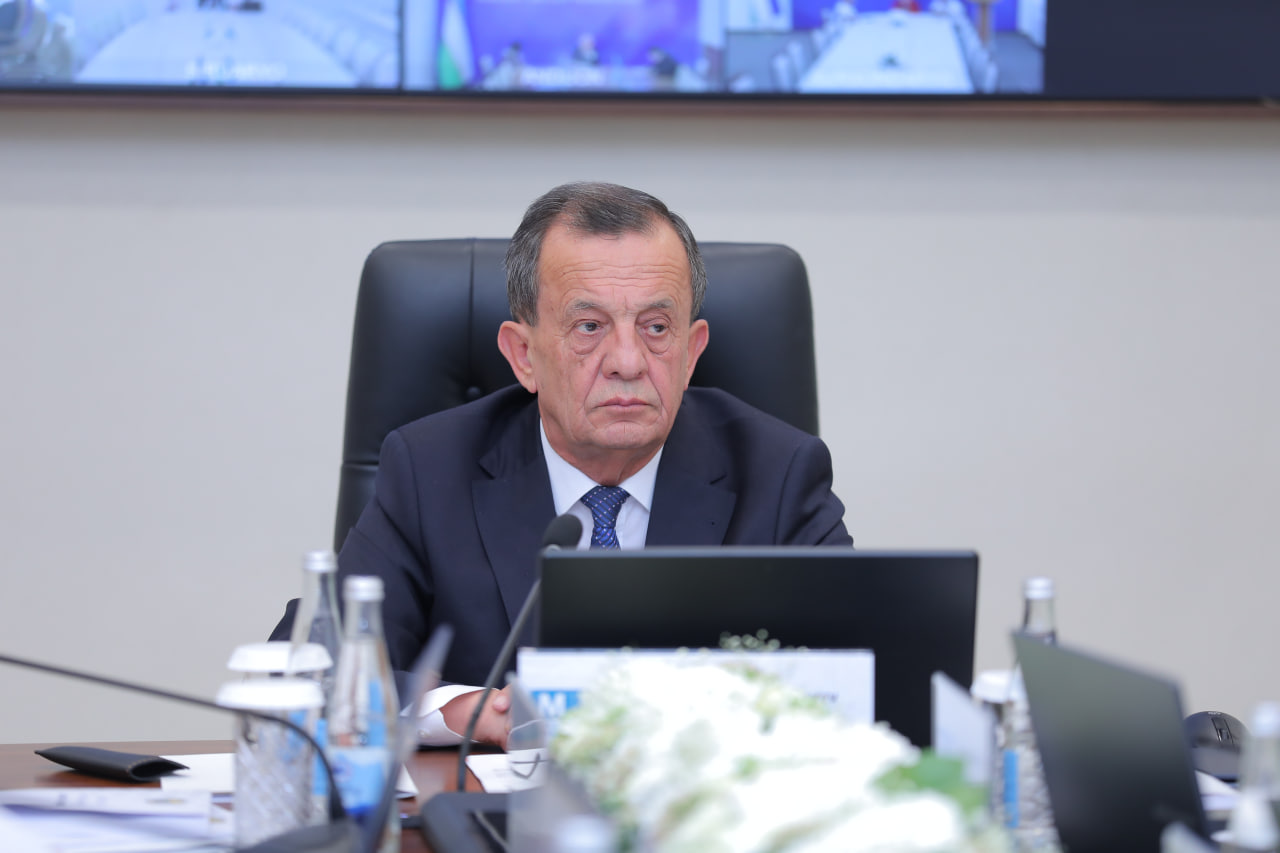
It should be noted that the Office for Democratic Institutions and Human Rights of the Organization for Security and Cooperation in Europe intends to participate in the observation of the elections in Uzbekistan with a comprehensive mission consisting of a core group, long-term and short-term observers, about 350 observers in total.
The great interest of foreign states and international organizations in the elections in Uzbekistan testifies to the international community's recognition of the democratic reforms being carried out in our country.
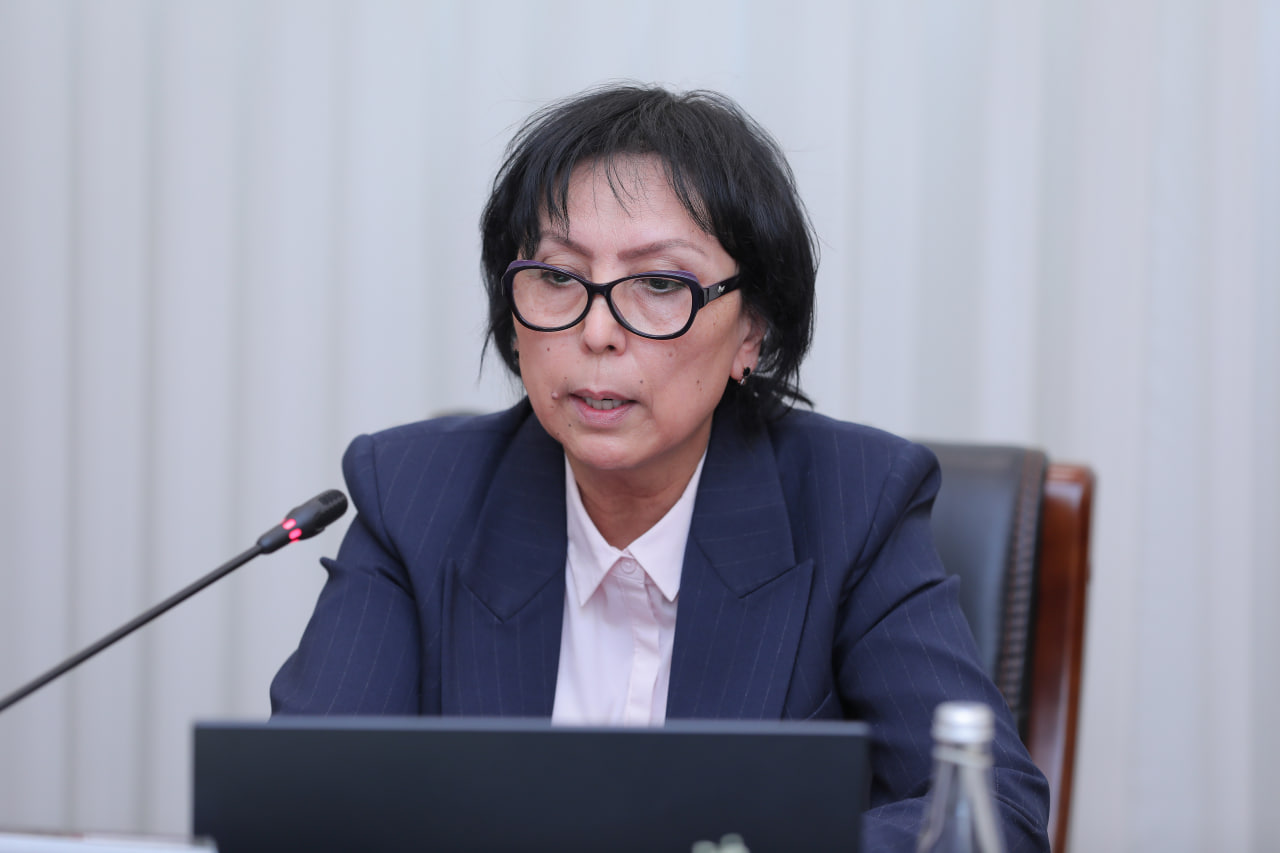
Accordingly, it was decided at the Central Election Commission meeting to accredit observers from international organizations who will participate in the elections to the Legislative Chamber of the Oliy Majlis and the local Councils (Kengashes), and some observers from international organizations such as the Commonwealth of Independent States, the CIS Inter-parliamentary Assembly and the Office for Democratic Institutions and Human Rights of the Organization for Security and Cooperation in Europe were accredited.
As of today, foreign and international organizations wishing to accredit observers can log into the “E-Saylov” information system in their country and enter data electronically in a specific format and submit it for review.
Another notable aspect of this process is that new samples of mandates of accredited foreign observers are automatically generated electronically through this system.
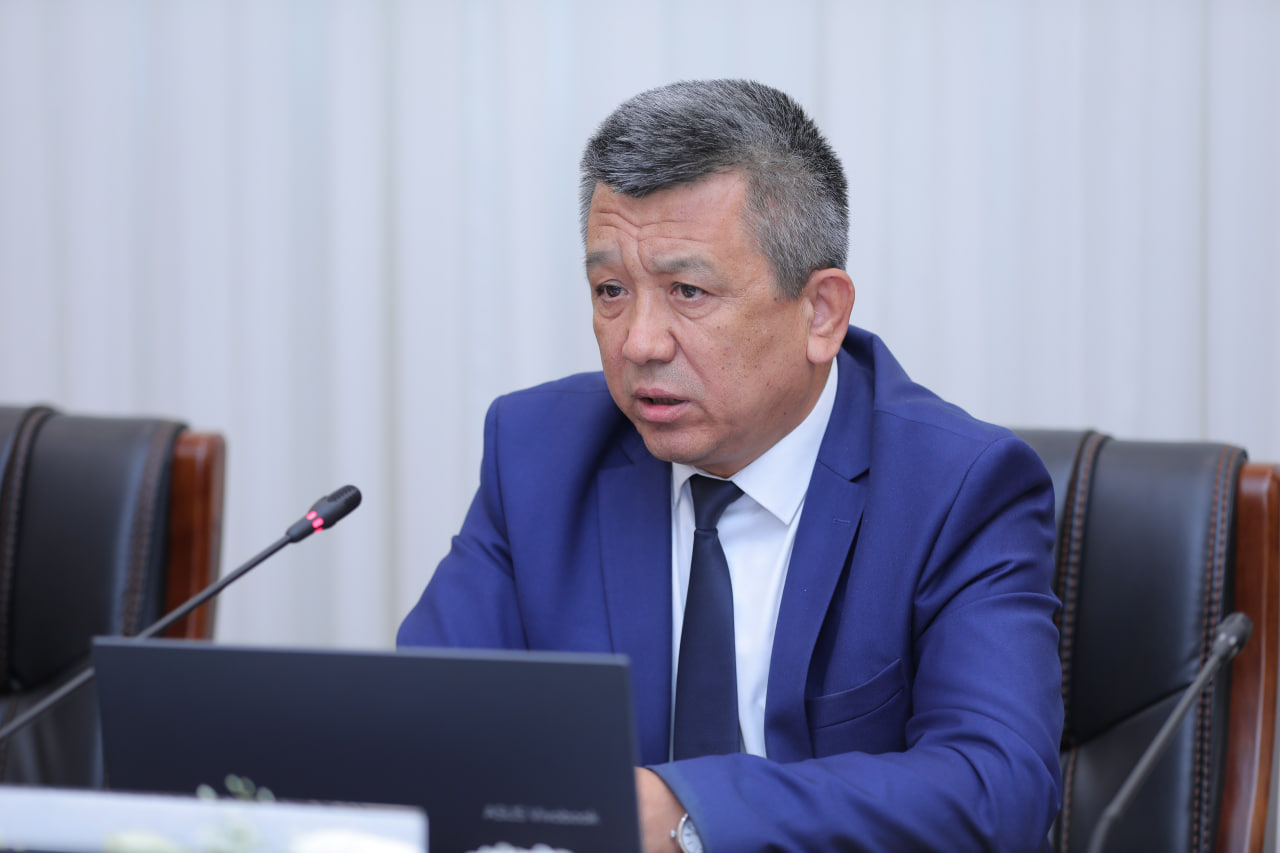
Also at the meeting of the Central Election Commission, the relevant decision was taken on the establishment of the Instant Information Center – “Call Center” - and the approval of its statutes. The “Call Center” will receive citizens' complaints centrally and provide them with legal explanations and consultations in real time.
The main objectives of the “Call Center” are to establish a dialog with citizens in real time during the election campaign, to provide the population with complete and reliable information on the activities of the commissions, the stages of the electoral process, to create the necessary conditions for the unconditional realization of citizens' rights to vote and appeal, and to strengthen their awareness of electoral legislation and processes.
Central Election Commission Press Service
Uzbekistan and Belgium: Toward a New Stage of Strategic Partnership with the European Union
📅 29.10.2025
In October, the President of the Republic of Uzbekistan, Shavkat Mirziyoyev, will pay a state visit to the Kingdom of Belgium, during which important decisions are expected to be made that will mark a qualitatively new stage in relations between Uzbekistan and the European Union. In particular, the visit will feature the signing of the Agreement on Enhanced Partnership and Cooperation.
In recent years, Uzbekistan has been actively shaping a new framework of engagement with Europe – a key pillar of stability amid current geopolitical tensions and global economic uncertainty. The ties between Uzbekistan and European countries continue to grow, and the areas of cooperation are diversifying, supported by the ongoing reforms in Uzbekistan.
Building a New Chapter in Relations
After gaining independence, Uzbekistan’s relations with the European Union developed dynamically. A Memorandum of Understanding between the Government of Uzbekistan and the European Commission was signed in 1992, followed by the establishment of diplomatic relations in 1994. The foundation of cooperation was laid by the Partnership and Cooperation Agreement (PCA) signed in June 1996 and entering into force in 1999. However, at a certain stage, cooperation faced difficulties due to the insufficient pace of democratic reforms in Uzbekistan.
With the election of Shavkat Mirziyoyev as President, the situation changed dramatically. As early as 2017, during his visit to Tashkent, Stefano Manservisi, Director-General for International Cooperation and Development of the European Commission, stated that “the EU regards Uzbekistan as a strategic partner.” The sweeping democratic and economic reforms launched in Uzbekistan helped resolve within a short period many issues that had long remained unsolved. Forced labor was completely eradicated, and reforms in the cotton sector enabled the country to abandon raw cotton exports altogether.
As reforms advanced, the legal and institutional framework of relations with Europe expanded rapidly. While previously Uzbekistan and the EU granted each other most-favored-nation treatment under the PCA, in April 2021 the EU granted Uzbekistan GSP+ beneficiary status, and in 2022 the Enhanced Partnership and Cooperation Agreement (EPCA) was initialed.
Along with internal transformation, Uzbekistan’s foreign policy architecture also changed. Priority was given to closer cooperation with neighboring Central Asian states, as well as the active expansion of ties with European countries – a vector that has strengthened steadily in recent years.
Just in the past year, Uzbekistan established strategic partnership relations with France, Italy, and Slovakia, while discussions on expanding strategic cooperation with Hungary continued. President Mirziyoyev also visited Slovenia, and Italy’s Prime Minister and Bulgaria’s President visited Uzbekistan.
A milestone in strengthening relations between Uzbekistan and Europe, and between Europe and Central Asia as a whole – was the first EU–Central Asia Summit, held in Samarkand in April 2025 under the chairmanship of Shavkat Mirziyoyev. Uzbekistan presented a broad range of initiatives to create a new model of regional cooperation between Central Asia and Europe, including: a multilateral agreement on investment protection and promotion; the launch of a Central Asia–EU Joint Chamber of Commerce; the adoption of a regional support program for SMEs and women’s entrepreneurship; the establishment of an investment platform to promote regional projects in green energy, innovation, transport, infrastructure, and agriculture.
The Samarkand Summit was highly productive. A Joint Declaration was adopted, establishing a strategic partnership between the two regions in trade, transport, energy, digital connectivity, and water management. European Commission President Ursula von der Leyen announced that the EU had prepared a €12 billion investment package for Central Asia under the Global Gateway initiative.
The Trajectory of Economic Cooperation
Uzbekistan’s deep democratic transformations have significantly improved relations with European countries. Economic reforms have enhanced the competitiveness of Uzbekistan’s economy, stimulating investor confidence and growing interest from European businesses.
The results are impressive. Over the past 8 years, Uzbekistan’s GDP has doubled, reaching $115 billion in 2024. Since 2017, investment in fixed capital has totaled $240 billion, of which foreign investment exceeded $130 billion. The country’s foreign exchange reserves surpassed $48 billion for the first time in history. Structurally, the share of industry in the economy increased from 20% to 26%, and services from 44% to 47%. Labor productivity (GDP per employed person) rose by 45%.
As a result, opportunities for mutually beneficial cooperation between Uzbek and European businesses have expanded. Between 2017 and 2024, Uzbekistan’s trade with the EU increased 2.4 times to $6.4 billion; exports grew 3.6 times to $1.7 billion, and imports 2.2 times to $4.7 billion. In 2024, the EU’s share in Uzbekistan’s total trade turnover was 9.7%, in exports 6.3%, and in imports 12%. The EU ranked third among Uzbekistan’s trade partners, after China and Russia.
The EU’s share in Uzbekistan’s total exports increased from 3.8% to 6.3% over the same period. This growth was driven by Uzbekistan’s accession to the GSP+ preferential trade system, granting duty-free access to the EU market across roughly 6,200 tariff lines. The share of Uzbekistan’s exports benefiting from GSP+ reached 59%, with a preference utilization rate of 84%, indicating efficient use of trade benefits.
In 2024, Uzbekistan’s exports to the EU were dominated by chemical products (52.1%), as well as textiles, ferrous and non-ferrous metals, minerals, and food products. Among EU members, France accounted for 47.2% of exports, Lithuania for 10%, and Latvia for 6.9%.
Uzbekistan’s imports from the EU significantly exceeded exports – a reflection of the ongoing technological modernization of the national economy. Around 16% of Uzbekistan’s total imports of machinery, equipment, and transport vehicles come from EU countries.
Investment cooperation is also expanding rapidly. In 2024, foreign investments and loans from EU countries and their financial institutions increased by 77%, reaching $4.1 billion (compared to $2.3 billion in 2023). The most active investors were Germany ($1.37 billion), the Netherlands ($1.05 billion), Cyprus ($858.9 million), the Czech Republic ($137.8 million), Italy ($99.8 million), and Sweden ($97.5 million). Today, around 1,000 enterprises with EU capital operate in Uzbekistan, with a total project portfolio of €30 billion.
A special role in recent years belongs to the EBRD, of which Uzbekistan has become one of the largest beneficiaries. The Bank’s total investments in Uzbekistan’s economy exceeded €5 billion, including around €1 billion in 2024, primarily directed toward the private sector.
Reforms in Uzbekistan have become the key driver for unlocking the significant potential of trade and economic cooperation with the European Union.
Uzbekistan–Belgium
The upcoming visit will also focus on strengthening relations between Uzbekistan and Belgium. Diplomatic relations were established following the opening of the Embassy of Uzbekistan in Brussels in 1993. In 1996, the two countries signed an Agreement on avoidance of double taxation, and in 1998 – an Agreement on mutual protection and promotion of investments, which provide legal guarantees for investors in both states.
Business contacts have intensified in parallel with Uzbekistan’s reform agenda. The visits of 2019 and 2022 set the tone for cooperation in infrastructure, energy, and the digital economy. More important than the current trade volumes has been the recognition and support of Uzbekistan’s reforms by EU partners, laying the foundation for long-term engagement.
In 2024, bilateral trade amounted to $62.3 million, including $7.3 million in Uzbek exports and $55 million in imports. Investment cooperation is gaining momentum: several dozen companies with Belgian capital now operate in Uzbekistan, including wholly owned enterprises. New technologies are being localized, for example, Jaga Climate Designers is participating in a joint venture for heating and ventilation systems, and Picanol Group is localizing the assembly of high-tech textile machinery. Belgian brands Belcolade and Prefamac are exploring opportunities to launch chocolate production with subsequent localization.
Despite modest trade volumes, there is significant potential for expanding cooperation in several areas. Given Belgium’s leading role in pharmaceuticals and biomedical research and Uzbekistan’s growing pharmaceutical market, joint ventures or industrial clusters could be developed in this sector, involving companies such as UCB and Janssen Pharmaceutica.
There is also strong potential for joint fruit and vegetable processing projects in Uzbekistan, targeting exports to the EU via Belgian logistics hubs such as the Port of Antwerp and wholesale markets. Potential partners include Greenyard and Puratos. Direct seasonal exports of fresh fruits (e.g., grapes in autumn and winter), as well as dried vegetables, spices, and organic products, could also be expanded. In light industry, there is room to increase exports of ready-made knitwear and home textiles, provided European quality and safety standards are met. The market potential is evident – Belgium imported about $7.9 billion worth of clothing in 2024.
The main challenges remain logistics and standards. Belgium functions as a major EU maritime hub centered around Antwerp, while direct routes from Uzbekistan are still limited. The near-term priority should be pilot supply chains ensuring quality and traceability, the development of cold logistics, certification under EU technical and sanitary regulations, the use of Benelux consolidation hubs, and trade finance tools for SMEs. With the gradual development of new overland routes along the Middle Corridor, Uzbekistan will gain a stronger foothold in high value-added exports without higher costs or delivery delays.
Conclusion
Uzbekistan is entering a stage of deepened economic cooperation with the European Union. During the ongoing modernization and digital transformation of its economy, European investment, technology, education, and research experience can play a key role. At the same time, Uzbekistan seeks to expand exports of industrial goods as their quality improves.
Uzbekistan is also a rapidly growing market with a young and dynamic population, now reaching 38 million people – an 18% increase since 2017. Every year, around 700,000 economically active individuals enter the labor market, forming a substantial human resource base for the economy, including joint ventures.
As a result of poverty reduction policies, living standards and household incomes have risen significantly. Whereas a third of the population once lived below the poverty line, 7.5 million people have been lifted out of poverty, and the poverty rate declined to 8.9% in 2024, with plans to reduce it further to 6% this year. These policies not only address social challenges but also expand domestic demand, increasing the interest of European businesses in entering Uzbekistan’s market.
The further deepening of Uzbekistan’s economic engagement with the EU and Belgium is an objectively mutually beneficial process – one that will define the success of the upcoming state visit of President Shavkat Mirziyoyev to Belgium.
The agreements expected to be signed will help advance joint projects in sustainable energy and infrastructure, strengthen transport and technological connectivity between Central Asia and Europe, and position Europe as a key partner in Uzbekistan’s long-term growth and modernization trajectory.
Obid Khakimov,
Director of the Center for
Economic Research and Reforms


